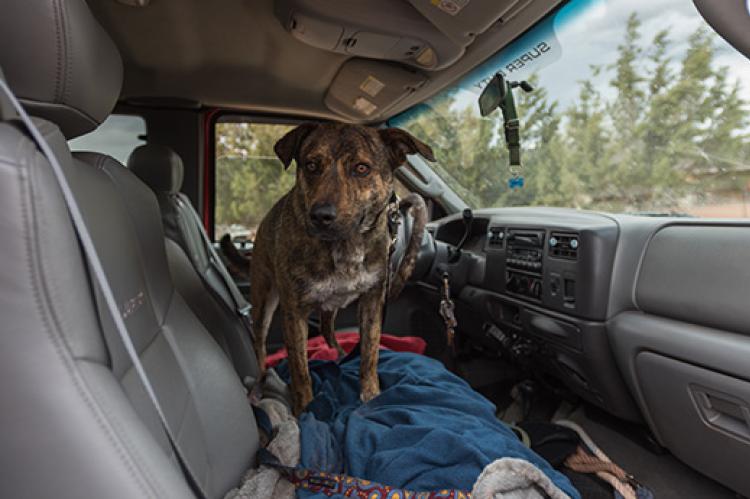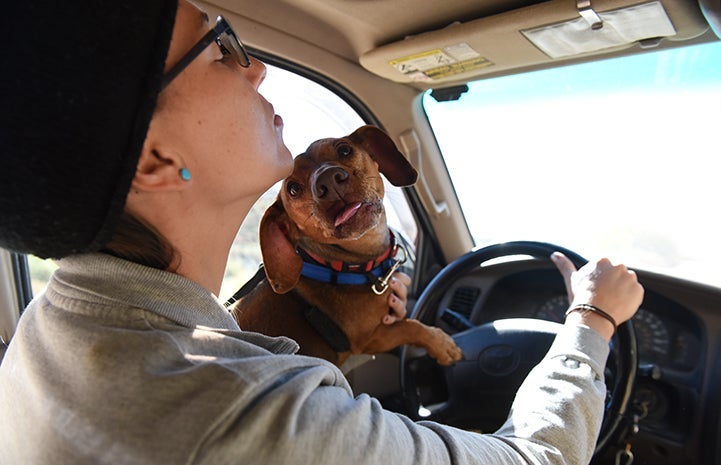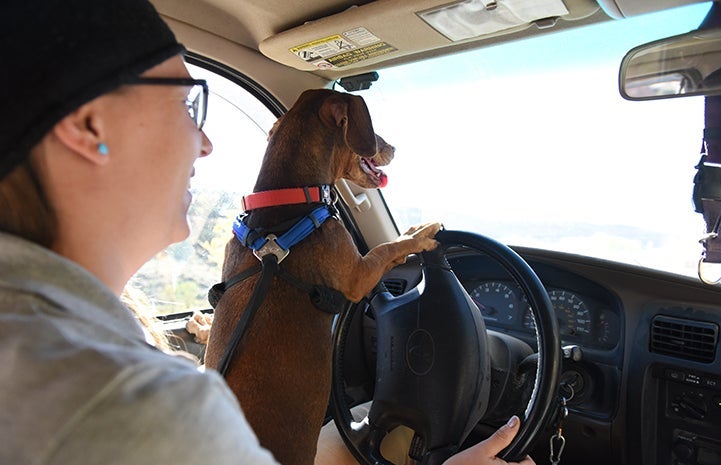How to Relieve Dog Car Anxiety and Fear of Car Rides

Do you have a dog who hates car rides — or who looks afraid at even the mention of car travel? Maybe your dog refuses to jump in the car, or they shake and pant as you drive. Dog car anxiety isn’t uncommon, but there are some steps you can take to help your dog get over their fear of car rides.
Why is my dog terrified of the car?
First, it can help to pinpoint why exactly your dog has developed anxiety about car travel. Some dogs experience motion sickness, which can make them adverse to riding in a car; others lack a positive association with car rides.
If you are only traveling in the car with your dog to outings that they might not necessarily like — such as going to the vet or groomer — your dog might begin to associate the car with those less-than-desirable experiences. It’s also possible that something you weren’t aware of spooked your dog while they were riding in a vehicle. To turn things around, it’s time to build some positive associations between the car and your dog.
Steps to help dog car travel anxiety
We can help most dogs feel better about car rides by teaching them to associate the car with good things. Before starting these exercises, open a car window just a little for fresh air. If it’s hot outside, you might want to work in the evenings or early mornings. You could also cool the car before bringing your dog out to it, but don’t blast air conditioning on the dog.
Follow these steps to help combat a dog’s fear of car rides:
Step 1: Have your dog on leash if your car isn’t in an enclosed, dog-safe area. Open the car door, and anytime your dog looks at or approaches the car, toss them a high-value treat. Continue this, waiting to reward as your dog gets closer and closer to the car.
Step 2: Once you’ve established a positive association to being near the car, climb into the car holding the dog’s lead and place some high-value treats or a toy inside the threshold of the car. Putting it on the floor of the back seat will be a good place to start. Speak to your dog in a gentle, positive tone. Start moving farther inside the car, and place the treat and/or toy farther into the car. The goal is to have your dog feel relaxed enough to climb in the car.

Step 3: If your dog is still unwilling to climb in, gently pick them up and help them in. Attach their seatbelt or other dog car restraint. Then, sit next to your dog and offer praise. Use a toy or food as a reward. Then, teach your dog a release word, such as “OK,” and climb out together (you first) and go for a short walk — another reward. Practice this three times in one day.
Step 4: On another day repeat step 3, but this time have your dog eat a whole meal out in the car. Sit in the car with your dog next to you and let them eat. After they're finished, release your dog with an “OK” and take a walk.
Step 5: Dinner out again! This time, put the dog in the car with their food and start the engine. Don’t go anywhere; just start the car. If your dog is willing to eat with the motor running, let it run. If not, shut it off and let them finish eating. Then, release them and take your walk together.
Step 6: If the dog stopped eating with the motor on, try a higher-value food the next day. Repeat the previous day’s activity: Give a yummy dinner with the motor running, and take a walk afterward. Practice daily or nightly until your dog is relaxed, climbs in and out of the car, and enjoys dinner with the motor running.

Step 7: You have reached the big event: the car ride! Just like every other day, go out together, get in the car, and start the motor. Have the dog’s meal with you, but don’t serve it yet. Attach your dog’s seatbelt, and offer a toy for the short journey. As you leave the driveway, talk to and praise your dog. Drive no more than five minutes, and when you get back, serve your dog their meal in your driveway with the motor still running. Then release them, take a walk together, and offer lots of praise.
Practicing stress-free car trips with your dog
From this point on, practice daily and add drive time each day. If your dog starts to drool or become anxious at any time, stop and take a walk and then go home. Make the next day’s drive a little shorter, or take a route with fewer curves and bumps if you suspect that might make a difference.
You don’t need to serve full meals with these outings anymore, but a small treat or playtime are great rewards for stress-free trips. And even once your dog becomes reliably relaxed with these regular trips, remember to keep taking them for car rides that don’t include something potentially stressful like a vet appointment. That way, their positive association with the car can remain intact.
If your dog continues to display stress or anxiety in the car, please consult your veterinarian to inquire about medications for anxiety and/or car sickness.